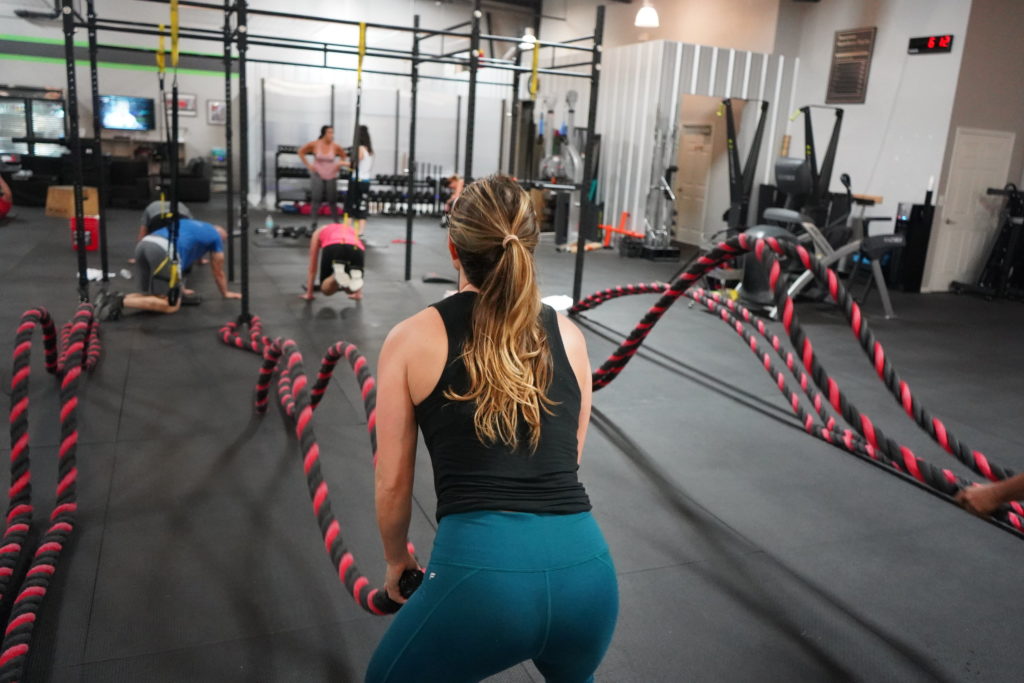The Need for Kids to Move More
It seems obvious on first glance that kids need to move more—the obesity epidemic is growing, and technology invites a more sedentary lifestyle and creates a new set of movement problems. Sports specialisation along with helicopter parenting have fostered a generation or two who have not experienced and are not experiencing play as children (2,5).
That’s why kids should work out, right?
Children are missing something natural—normal healthy movement, a variety of sometimes fast, sometimes slow, sometimes heavy, and sometimes difficult exertion. So we should have kids workout because we see that the lack of movement is bad? That seems like indulging in a walk down the road toward a logical fallacy.
The Rehab Model of Youth Fitness Misses the Point
Defining why kids should workout based on the need for rehabilitation misses the point. It limits the population of youth who “need to exercise” to only those who are identified as either not having moved enough or well enough, or having moved only in a repetitive way.
Kids should work out because it encourages, supports, and helps sustain good physical and mental health.
As it develops, the human body needs movement to properly make use of natural physiological, as well as psychological and social development milestones in the most optimal way.
There is an abundance of research out there identifying the benefits of physical activity for various aspects of our well-being: brain function, cardiorespiratory health, lymphatic system, mental health, etc. We need to move for optimal health, no matter our age (3,4).
Workouts Specifically Developed for Youth
What is important here is that age is taken into consideration, not as an afterthought to an existing program, but as the core of a program. Who are we creating an optimal human movement program for so that they may reap all the benefits? What do we need to consider for that special population? Are there limiters on what they can express biologically? How do they learn best? What social environment will produce the most motivated engagement? Does it differ within a demographic? For instance, seniors at age 60 and seniors at age 85. Kids at age 3 and kids at age 16. I have yet to meet either a 3-year-old or an 80-year-old that needs to know how to snatch. Needs may differ not only by degree, but also in kind.
Of course, organisations exist to direct us and recommend what is best on a more global level for each specific demographic. In this case, the American Academy of Pediatrics (1) has stated clearly that for strength training:
-
A program must be specifically designed for children.
-
Coaches must be specifically trained to work with children.
Kids Can’t Express What They Don’t Possess
It seems intuitive that this is the case; however, many parents and coaches assume modifying an adult-based program is good enough. Yet most governments disagree—in the US, federal legislation is being considered to expand beyond the Safe Sport Act, which was passed in January 2018, for the specific protection of children in workout environments.
It is also easy to fall into the trap of desiring that your child engage in an activity that you enjoy, without thought or accommodation to the idea of what is actually best for the child and how that differs at each biopsychosocial age.
For example, when biological expression is considered, what are kids able to gain from the training stimulus, if anything? Is increased work capacity or power output a proper goal for a 7-year-old?
We can begin moving toward what to do, and how to do it, once we agree on why we need to do it.
ALL children should exercise with a plan that is designed with their development, physiological stage, and best interests in mind.
That is what our Proficient Kids/Teens program is designed to achieve
References
(1) Council on Sports Medicine & Fitness. Strength training in children and adolescents. Pediatrics 121(4): 835-840, April 2008.
(2) Goldstein J. Play in Children’s Development, Health and Well-Being. Available at https://www.ornes.nl/wp-content/uploads/2010/08/Play-in-children-s-development-health-and-well-being-feb-2012.pdf. Accessed 23 May 2019.
(3) Harvard Men’s Health Watch. Walking: your steps to health. Available at https://www.health.harvard.edu/staying-healthy/walking-your-steps-to-health. Accessed 22 May 2019.
(4) Pontzer H. Evolved to exercise. Scientific American 320(1): 22-29, January 2019.
(5) Real Play Coalition. Value of Play Report. Available at https://www.realplaycoalition.com/wp-content/uploads/2018/11/The-Real-Play-Coalition_Value-of-Play-Report.pdf. Accessed 23 May 2019.

